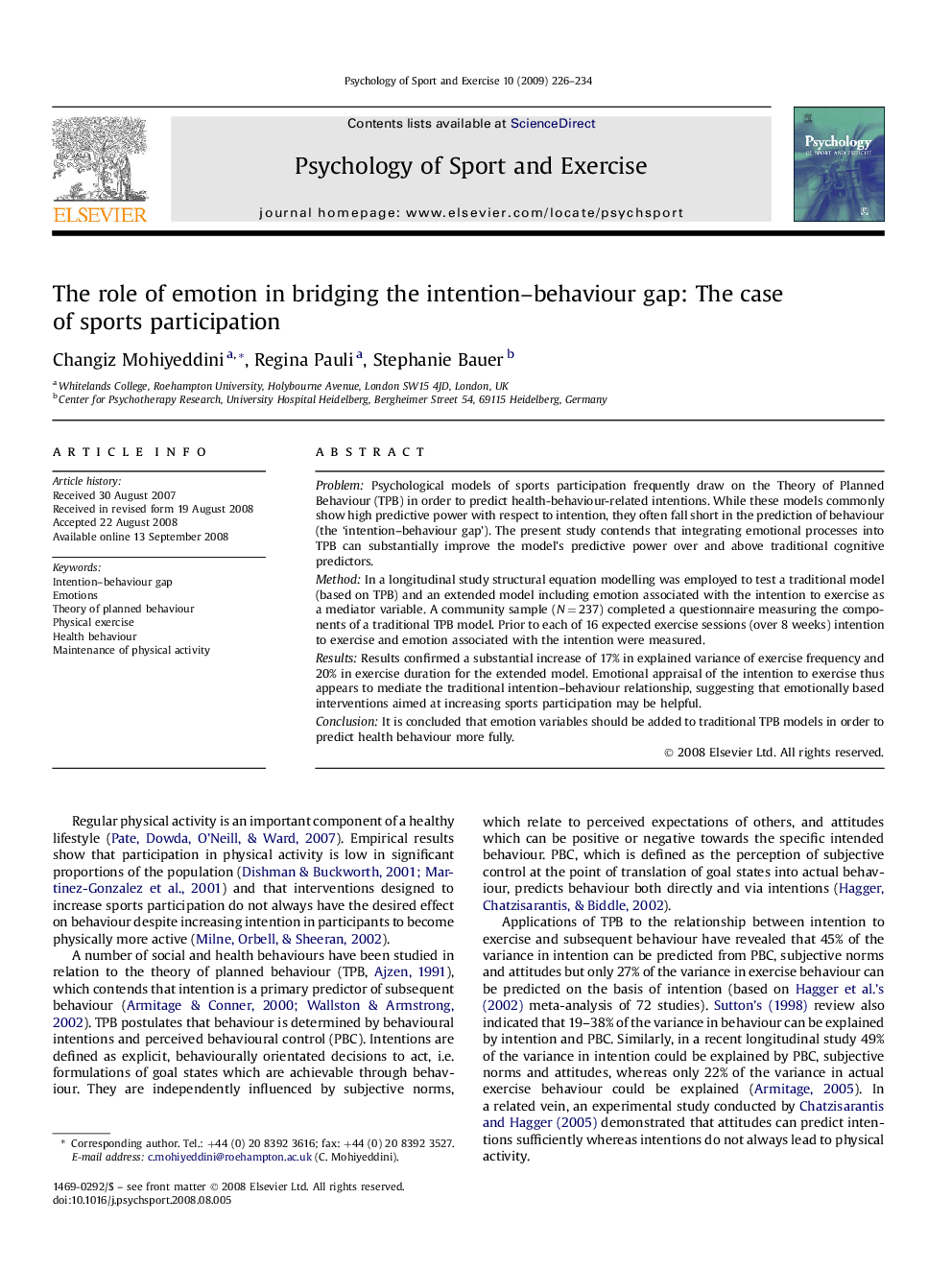| Article ID | Journal | Published Year | Pages | File Type |
|---|---|---|---|---|
| 894928 | Psychology of Sport and Exercise | 2009 | 9 Pages |
ProblemPsychological models of sports participation frequently draw on the Theory of Planned Behaviour (TPB) in order to predict health-behaviour-related intentions. While these models commonly show high predictive power with respect to intention, they often fall short in the prediction of behaviour (the ‘intention–behaviour gap’). The present study contends that integrating emotional processes into TPB can substantially improve the model's predictive power over and above traditional cognitive predictors.MethodIn a longitudinal study structural equation modelling was employed to test a traditional model (based on TPB) and an extended model including emotion associated with the intention to exercise as a mediator variable. A community sample (N = 237) completed a questionnaire measuring the components of a traditional TPB model. Prior to each of 16 expected exercise sessions (over 8 weeks) intention to exercise and emotion associated with the intention were measured.ResultsResults confirmed a substantial increase of 17% in explained variance of exercise frequency and 20% in exercise duration for the extended model. Emotional appraisal of the intention to exercise thus appears to mediate the traditional intention–behaviour relationship, suggesting that emotionally based interventions aimed at increasing sports participation may be helpful.ConclusionIt is concluded that emotion variables should be added to traditional TPB models in order to predict health behaviour more fully.
